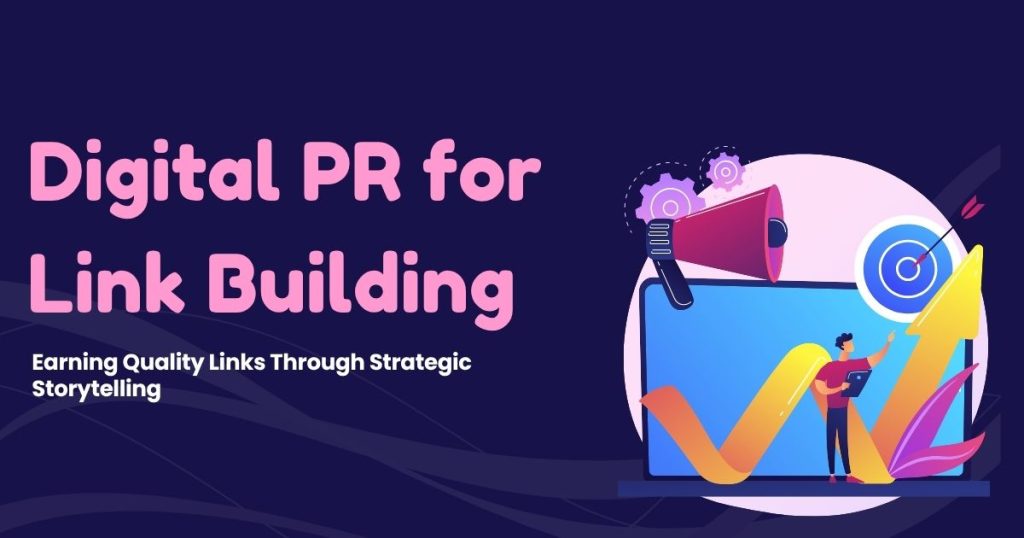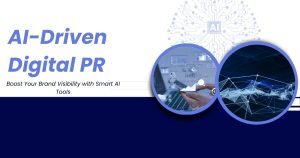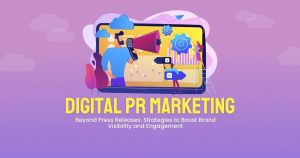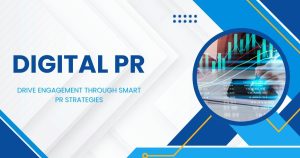Digital PR for Link Building: A Complete Strategy Guide

Link building remains one of the most challenging aspects of SEO. Traditional outreach methods often fall flat, with bloggers and journalists receiving dozens of generic pitches daily. Digital PR offers a refreshing alternative that not only earns high-quality backlinks but also builds genuine brand awareness and credibility.
Unlike conventional link building tactics that focus purely on securing links, digital PR prioritizes creating newsworthy content and building authentic relationships with media professionals. This approach naturally attracts editorial mentions and backlinks from authoritative publications, delivering sustainable SEO results that search engines value.
This guide explores how to leverage digital PR for link building success, covering everything from campaign development to media outreach strategies that actually work.
What Makes Digital PR Different from Traditional Link Building
Digital PR approaches link acquisition through a journalism lens rather than an SEO-first mentality. Instead of asking “How can I get a link from this site?” digital PR asks “What story would this publication’s audience find valuable?”
This shift in perspective changes everything about your outreach strategy. Traditional link builders often pitch generic content or request links to existing pages. Digital PR professionals create compelling narratives, conduct original research, and offer exclusive insights that journalists actively want to cover.
The quality difference is substantial. Digital PR typically earns links from high-authority news sites, industry publications, and respected blogs that rarely respond to standard link building requests. These publications have strict editorial standards and only link to genuinely newsworthy content.

Building Your Digital PR Link Building Strategy
Successful digital PR campaigns start with thorough research and strategic planning. Your strategy should align with both your SEO goals and the interests of your target media outlets.
Identifying Target Publications
Start by researching publications your target audience reads regularly. Look beyond obvious industry blogs to include mainstream media, local news outlets, and niche publications that might find your story relevant.
Use tools like Ahrefs or SEMrush to analyze competitor backlinks and identify publications that have previously covered similar businesses or topics in your industry. Pay attention to the types of stories these outlets prefer and the journalists who write them.
Create a tiered list of target publications, prioritizing high-authority sites that align with your brand values and audience. Include contact information for relevant journalists, their recent articles, and notes about their preferred story angles.
Developing Newsworthy Content Ideas
The foundation of effective digital PR for link building lies in creating content that journalists genuinely want to share with their readers. Generic promotional content rarely succeeds, but several types of stories consistently attract media attention.
Original research and data studies perform exceptionally well because they provide unique insights that other publications can reference and cite. Survey your customers, analyze industry trends, or compile data from multiple sources to create compelling statistics and findings.
Expert commentary on current events or industry developments offers another powerful angle. Position your team as thought leaders by providing informed perspectives on breaking news, regulatory changes, or market shifts affecting your industry.
Human interest stories that connect your business to broader social issues or community impact often resonate with journalists seeking meaningful content beyond typical business coverage.
Creating Link-Worthy Digital PR Campaigns
The most successful digital PR campaigns for link building combine compelling storytelling with solid data and visual elements that make stories easy for journalists to cover.

Research-Based Campaigns
Conduct original surveys, analyze public datasets, or commission studies that reveal surprising insights about your industry. The key is uncovering information that challenges common assumptions or highlights emerging trends.
For example, a software company might survey remote workers about productivity challenges, revealing data that contradicts popular beliefs about work-from-home effectiveness. This type of research naturally attracts media coverage because it provides fresh angles for journalists writing about workplace trends.
Present your findings through multiple formats including detailed reports, infographics, and summary sheets tailored for different types of media outlets. Local newspapers might prefer simplified statistics, while industry publications may want comprehensive methodology details.
Trend Analysis and Predictions
Journalists constantly seek expert insights about where industries are heading. Develop campaigns that analyze current market conditions and offer informed predictions about future developments.
Support your predictions with concrete evidence such as patent filings, investment trends, regulatory changes, or consumer behavior data. The more evidence you provide, the more likely journalists are to view your predictions as credible and worth covering.
Visual Storytelling Elements
Most successful digital PR campaigns include strong visual components that make stories more engaging and shareable. Infographics, charts, interactive tools, and compelling photography significantly increase your chances of earning coverage.
Create multiple visual assets for each campaign, allowing journalists to choose elements that best fit their publication’s style and space requirements. Provide high-resolution versions and include proper attribution information to make the publishing process as smooth as possible for media contacts.
Media Outreach That Builds Relationships
Effective digital PR for link building depends heavily on building genuine relationships with journalists and editors rather than sending mass promotional emails.
Personalized Pitch Development
Research each journalist’s recent work and tailor your pitches to their specific interests and writing style. Reference their previous articles when relevant and explain why your story would appeal to their particular audience.
Keep pitches concise but informative, leading with the most newsworthy angle and supporting details. Include relevant visuals, data summaries, and expert availability in your initial outreach to demonstrate the story’s completeness.
Timing and Follow-Up Strategy
Send pitches during journalists’ preferred working hours, typically Tuesday through Thursday mornings. Avoid Mondays when email inboxes are typically overflowing and Fridays when attention shifts toward weekend plans.
Develop a systematic follow-up schedule that provides additional value without becoming pushy. Share related developments, offer additional expert sources, or provide updated data that strengthens your original story angle.
Building Long-Term Media Relationships
The most successful digital PR practitioners develop ongoing relationships with key journalists in their industry. Regularly share valuable insights, offer expert commentary on breaking news, and provide reliable sources for future stories.
Consider creating a journalist resource center on your website with high-resolution images, executive bios, fact sheets, and contact information. This demonstrates professionalism and makes it easier for journalists to cover your stories accurately.
Measuring Digital PR Link Building Success
Digital PR campaigns generate value beyond direct link acquisition, making measurement more complex than traditional link building metrics.

Link Quality Assessment
Evaluate earned links based on domain authority, relevance, and traffic potential rather than quantity alone. A single link from a major industry publication often provides more SEO value than dozens of links from low-quality directories.
Track the specific pages that earned links and analyze how these backlinks impact your overall search rankings. Monitor branded search volume increases and referral traffic from earned media coverage.
Brand Awareness and Authority Metrics
Digital PR campaigns often boost brand recognition and thought leadership, creating indirect SEO benefits through increased branded searches and click-through rates.
Monitor social media mentions, branded search volume, and direct website traffic during and after campaign launches. These metrics indicate broader brand awareness improvements that support long-term SEO success.
ROI Calculation and Optimization
Calculate campaign ROI by considering both immediate link value and longer-term benefits such as increased brand recognition and future media relationships.
Track which types of stories and outreach approaches generate the best results for your specific industry and target publications. Use this data to refine future campaigns and focus resources on the most effective strategies.
Transform Your Link Building with Digital PR
Digital PR represents the evolution of link building from transactional outreach to relationship-based storytelling. By creating genuinely newsworthy content and building authentic media relationships, businesses can earn high-quality backlinks while simultaneously boosting brand awareness and industry authority.
Success requires patience and consistent effort, as digital PR relationships develop over time rather than producing instant results. However, the long-term benefits far exceed traditional link building approaches, creating sustainable SEO value that grows stronger with each successful campaign.
Start by identifying three publications your target audience reads regularly, then develop one compelling story idea that would genuinely interest their readers. This focused approach allows you to refine your digital PR process before scaling to larger campaigns and broader media outreach efforts.





